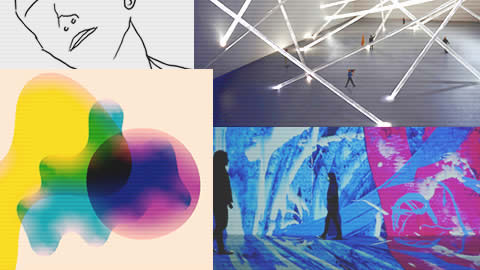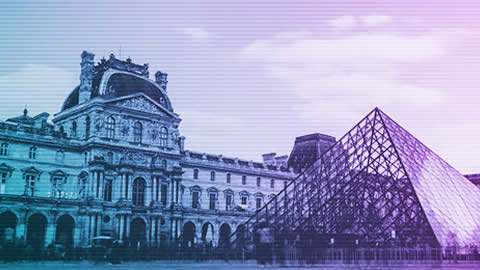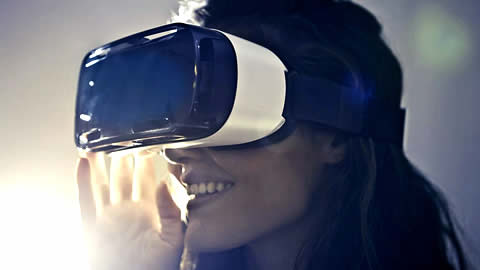It was a small step, or rather a drawing for a machine, but a big one for digital art. German artist and mathematician Frieder Nake created one of the first software packages in 1965 to develop computer-generated drawings. Few could have imagined that the advancement of technology would introduce a whole new branch of art.
The simplest definition is that digital art is a work performed on or using digital technology. We can also describe digital art as contemporary art that uses mass-production methods through digital media. The synergy of art and technology has influenced almost all art branches, from painting and sculpture to music and video. The marketing and advertising industry are the first to capture this wave of digital creativity, creating websites, movies, animations, and more.
Many artists have discovered their talents in the digital world and continue to work, develop, and discover new techniques and methods of expression. With the development of new technologies, interaction with the observer becomes an essential part in the further development of digital art.
Digital art example:
Daniel Rozin and Mechanical Mirrors ›
The artist and teacher of new technologies of interactive arts, Daniel Rozin, is easy to spot among other digital artists precisely because of his exceptional originality and deep interaction with his audience. He teaches his skills to young artists as part of the Tisch Art School's Interactive Telecommunications Program at New York University.
Rozin's many years of research, the direct application of software, and the constant exploration of the potential of new technologies have resulted in new and exciting concepts. Rosin's mirrors create the viewer's image on a kind of screens made of unexpected materials, from wood to wool balls or even pieces of garbage. Every bit of these mirrors is kinetic - the sensor captures the "image" of the observer as the screen moves to reflect the shape of the observer in front of the mirror.
Digital art example:
Zach Lieberman and Poetic Coding ›
Zach Lieberman is a designer, computer programmer, educator, digital artist, and one of the creators of openFrameworks. He currently lives in Brooklyn and is one of the lecturers at the School for Poetic Computation sfpc.io. Much of his work is interactive and, as he puts it, he wants to surprise with technology and break the line between the visible and the invisible.
Lieberman described his process as creating artwork using computer code, focusing on the creation of experimental drawing and animation tools. It creates interactive environments that invite participants to become performers, and the main focus is on how computing can be used as a medium for poetry.
Digital art example:
Sebastien Labrunie & the artificial reality of art ›
French digital media artist Sebastien Labrunie plays around with experiments with computer-generated visuals, glitch art, virtual reality, and video installations. Using various media, he produces links between analog and digital to explore human perception. In recent years, he has joined with Chinese artist Lu Yi to form the art duo Sondes A / V.
The video installation he presented in Beijing at the Big Asian Digital Art Exhibition (ADAE 2019) is titled Brèche. In French, the word brèche means breach, penetration. It is precisely this feeling that Labrunie wants to evoke in the viewer who "immerses" in his artistic vision of the space around him.
Digital art example:
Sterling Crispin and Human Technology ›
Sterling Crispin is a contemporary artist, software developer, and designer, originally from the Hawaiian Islands. He says that he is an artist and technologist alike. Often his work is seen as the collective, vague conclusion of humanity - especially in the context of the increasingly accelerated advancement of technology. In his art, he calls for environmental responsibility and the correlation of human action and nature, placing hope in the technology of present and future in solving problems.
What is essential to Crispin's work is that he allows respect for technology, interweaving scenes of cruelty, and unusual beauty. He thinks technology is an extension of humanity, an embodiment of the human spirit, not an external force that we must mitigate. He is interested in creating new dialogues, signs, and symbols that question existing, often conflicting narratives about the future and their implications for the present.
Digital art example:
15 folds and GIFs collection ›
15 folds, the London-based creative collective has grasped the artistic and expressive value of GIFs, short visual messages that have existed for three decades. GIF (Graphics Interchange Format) has been used on websites and applications in animated or static form since the beginning of the internet, GIFs and related formats have evolved today to the point where they represent their own art form.
Behind the names of 15 Folds are creatives Margot Bowman, Sean Frank, and Jolyon Varley. Their idea was to bring together creative artists who, among other things, express themselves in this unique digital format. They have collaborated successfully with artists such as Reed + Rader, Matthew Stone, Joe Currie, and fashion designer Iris van Herpen.
Digital art example:
Refik Anadol and data sculptures ›
Refik Anadol is a Turkey-born new media artist currently living and working in Los Angeles. Anadol explores the relationship between humans and technology through his technology-driven art projects based on data pools. The artist feeds these data sets into a series of machine learning algorithms to create multi-dimensional visualizations, what he calls data sculptures.
Anadol's artistic exploration helps us see the invisible around us, such as brain scans of dreams or wind patterns, by translating it into space, light, textures, and colors. His vision transforms the intangible into physical and compelling immersive experiences by using machines to simulate life.
Summary
We hope you found the listed artist and their usage of technology inspirational. A computer mouse or touch screen will never be able to replace the paintbrush and canvas. Still, it has managed to bring magic to the exhibition spaces and entirely new ways of interacting with the audience and the artist himself.


